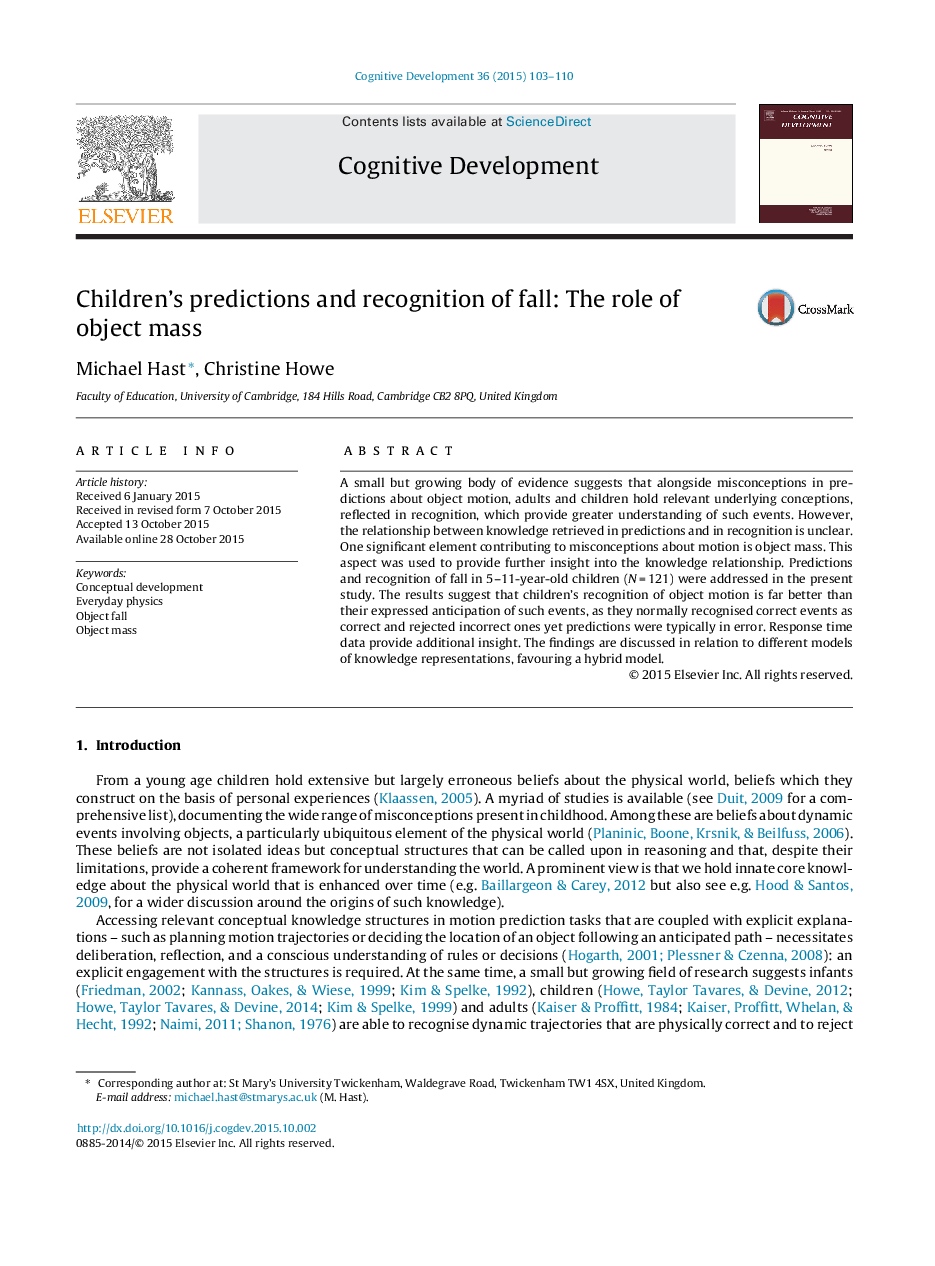| Article ID | Journal | Published Year | Pages | File Type |
|---|---|---|---|---|
| 916492 | Cognitive Development | 2015 | 8 Pages |
•Object motion predictions are largely erroneous and based on object mass.•Motion recognition mostly accurate but some interference of object mass.•Favours hybrid model with loose connections between explicit and tacit knowledge.•Access to knowledge improves with increasing age.•“Layering” as accounting for the differences is discussed.
A small but growing body of evidence suggests that alongside misconceptions in predictions about object motion, adults and children hold relevant underlying conceptions, reflected in recognition, which provide greater understanding of such events. However, the relationship between knowledge retrieved in predictions and in recognition is unclear. One significant element contributing to misconceptions about motion is object mass. This aspect was used to provide further insight into the knowledge relationship. Predictions and recognition of fall in 5–11-year-old children (N = 121) were addressed in the present study. The results suggest that children’s recognition of object motion is far better than their expressed anticipation of such events, as they normally recognised correct events as correct and rejected incorrect ones yet predictions were typically in error. Response time data provide additional insight. The findings are discussed in relation to different models of knowledge representations, favouring a hybrid model.
